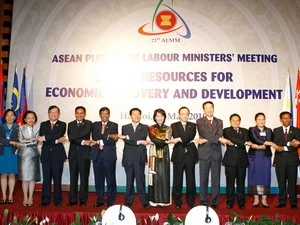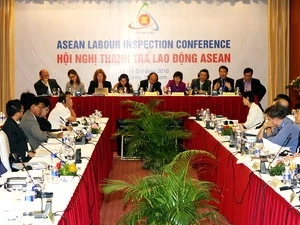In anticipation of the formation of the ASEAN Community at the end of this year – which is expected to generate 14 million jobs in 2025, Vietnam and many other regional countries are taking cautious steps to access the “open” labour market.
The birth of the ASEAN Community will make it easier for its citizens to acquire jobs abroad with attractive salaries under the ASEAN Agreement on the Movement of Natural Persons and the Mutual Recognition Arrangements (MRAs) which target eight professional services – accounting, architecture, engineering, medicine, dentistry, nursing, surveying and tourism.
Aware of this, Vietnam’s Vocational Training and Education Development Strategies for 2011-2020 and the Government’s Plan of Action on comprehensive education and training reform have highlighted the significance of setting up a National Qualifications Framework (NQF) in conformity with that of the region and the world.
To make the framework a reality, Vietnam has studied the ASEAN Qualifications Reference Framework (AQRF) and that of the UK, Australia, New Zealand and many others.
The Ministries of Education & Training and Labour, Invalids & Social Affairs are joining hands to build a project on the NQF, which is mainly constituted by tertiary education and vocational training. The draft project will be submitted to the Government as soon as possible.
Vietnam also participated in the working group on building the AQRF in 2012, which was ratified by regional economic and educational ministers in 2014 and by labour ministers a year later.
The Ministry of Labour, Invalids and Social Affairs (MoLISA) has been tasked with managing international cooperation in evaluating and issuing National Occupational Skills certificates and setting National Occupational Skills Standards that are more in line with those of ASEAN and the world.
The ministry is also piloting training major occupations using regional and international standards including applying state-of-the-art technologies from foreign countries.
As a result, 2,750 college students were trained from 2011-2015 in 34 main occupations and another 4,000 are expected to be qualified from 2016-2020.
The ministry has assessed the English language and computing skills of 150,000 final-year students pursuing major national, regional and international occupations at vocational schools.
Meanwhile, about 300,000 will be enrolled in vocational training programmes applying national, regional and international standards.
The move aims to meet the demands of the labour market in terms of quantity, quality and structure; advance training quality to match that of developed countries in ASEAN and the world; develop a contingent of skilled labourers to improve national competitiveness; fulfil sustainable poverty reduction goals; and ensure social welfare.
The MRA is considered crucial to labour movements between Vietnam and other ASEAN nations, leading Vietnam to participate in a trial project on the MRA in welding and auto technologies in the Mekong Sub-region in 2010.
However, international integration – including joining the ASEAN Community – poses a range of challenges for developing nations like Vietnam, forcing local labourers to face fierce competition with international rivals in both foreign and domestic markets.
The new situation requires each Vietnamese labourer to continuously study and equip themselves with new skills in order to avoid being overtaken in the home market.-VNA






















